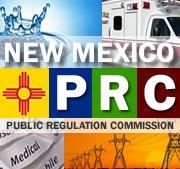Rio Grande Foundation Policy Brief: On Balance Evidence Points to Appointed Public Regulation Commission
(Albuquerque, NM) – New Mexico’s Public Regulation Commission (PRC) has been at the center of a number of momentous and controversial issues (particularly the Energy Transition Act) in recent years. But bi-partisan momentum exists for reforming the powerful regulatory body and a Constitutional Amendment will be on this November’s ballot which will transform the PRC into a three member body appointed by the Gov.
Is this a good move? What evidence exists from other, similar regulatory agencies? In his new Issue Brief “Should the Governor Appoint PRC Commissioners?” which analyzes the issue and brings evidence from other states into the discussion, the Rio Grande Foundation’s Adjunct Scholar Kenneth Costello discusses the issue and offer his recommendations.
Ultimately, Costello concludes, “While it was not a “slam dunk,” the finding of this brief is that a three-member PRC appointed by the Governor, with input from the nominating committee, would be best for New Mexico.
His arguments in favor of the Constitutional Amendment include: the current Commission size of five commissioners is too many, moving to an appointed model would lead to better-qualified members on the Commission, and appointed commissions have a bigger pool of applicants than the relatively limited number who would run for office.
At the Rio Grande Foundation we expect to disagree regularly with the measures taken by the PRC (the decision to adopt a 100% “renewable” electricity portfolio is only the latest). However, those are often philosophical issues handed down by the Legislature for the PRC to more fully vet and implement.
Ultimately, given the choice between a five member elected PRC and a three member appointed body, the three member commission is the most sensible.

